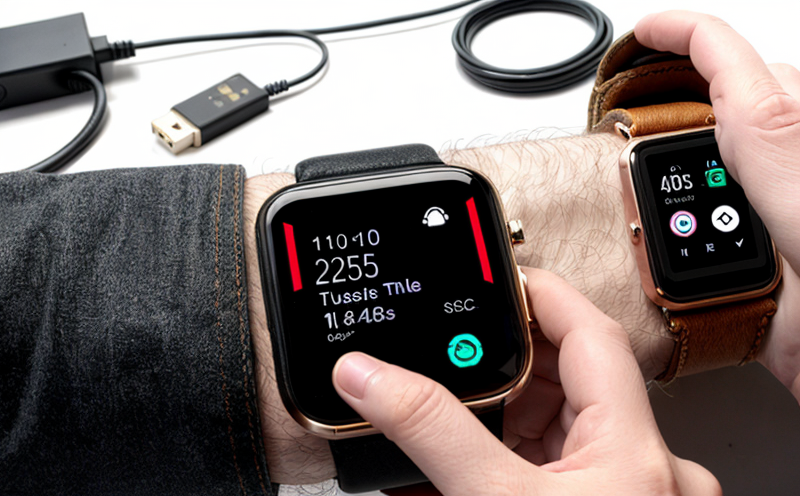IEC 61000 4-3 Radiated Immunity Testing for Portable Electronics
The IEC 61000 series of standards is designed to ensure electromagnetic compatibility (EMC) in electrical and electronic equipment. Specifically, IEC 61000-4-3 addresses radiated immunity testing. This crucial test evaluates how well portable electronics can withstand radio frequency interference (RFI). Compliance with this standard ensures that devices operate correctly even when exposed to the electromagnetic environment they will encounter in real-world use.
The importance of such testing cannot be overstated, especially for portable and wearable gadgets where size constraints often limit shielding effectiveness. This section aims to provide an in-depth look at what IEC 61000-4-3 radiated immunity testing entails, the standards it adheres to, and how it benefits manufacturers.
The test requires careful preparation of specimens. Portable devices like smartwatches, fitness trackers, and smartphones must be placed within a specially designed chamber that simulates real-world RF environments. The chamber emits controlled levels of electromagnetic interference at specific frequencies to assess the device’s robustness against RFI. Compliance with IEC 61000-4-3 ensures that these devices maintain their functionality under adverse conditions, enhancing user satisfaction and reliability.
Compliance with this standard is not just about meeting regulatory requirements; it's also about ensuring that products perform reliably in the field. This testing helps manufacturers identify potential vulnerabilities early on, allowing for necessary design modifications to improve product robustness. The test can be conducted at various stages of development, from prototype validation to final production, providing valuable insights throughout the R&D process.
The IEC 61000 series of standards is widely recognized and accepted globally. Compliance with these standards not only ensures that products meet regulatory requirements but also enhances marketability by establishing a benchmark for quality and reliability. By adhering to these standards, manufacturers can confidently launch their products into competitive markets knowing they have undergone rigorous testing to ensure robust performance.
Understanding the implications of IEC 61000-4-3 radiated immunity testing is crucial for quality managers, compliance officers, R&D engineers, and procurement teams. This knowledge allows them to make informed decisions about product development, production processes, and supply chain management. The standard’s focus on real-world conditions ensures that the products they bring to market are reliable and robust.
Portable electronics face numerous challenges in maintaining performance due to their small form factors and reliance on wireless technology. IEC 61000-4-3 provides a framework for addressing these challenges, ensuring that devices can withstand electromagnetic interference without compromising functionality. This standard is particularly important for wearable devices, where even slight disruptions could lead to critical issues.
Applied Standards
The IEC 61000-4-3 radiated immunity test is based on the following international standards:
- IEC 61000-4-3: Specifies the requirements and methods for determining the susceptibility of electronic and electrical equipment to radio frequency electromagnetic interference.
- EN 55022: European standard that specifies limits, test procedures, and measurement techniques for RF emissions from household appliances, equipment, and similar domestic articles.
- FCC Part 15: United States regulation that sets out the rules for devices intended to be connected to the public telecommunications infrastructure or used as components in such devices.
- CE marking: Ensures that products meet relevant European health, safety, and environmental protection requirements. Compliance with IEC standards is often a prerequisite for obtaining CE marking.
The application of these standards ensures harmonization across different regions, making it easier for manufacturers to comply globally.
Benefits
- Enhanced Reliability: Ensures that portable electronics can operate reliably in environments with electromagnetic interference.
- Better User Experience: Reduces the likelihood of performance degradation or failure, enhancing user satisfaction.
- Increased Marketability: Compliance with international standards enhances marketability and opens up access to global markets.
- Regulatory Compliance: Ensures that products meet regulatory requirements, avoiding costly rejections or recalls.
- Cost Efficiency: Early identification of potential issues through testing can save costs associated with product redesigns later in the development process.
- Improved Design: Provides insights into how to design more robust and reliable products from the outset.
- Enhanced Safety: Ensures that devices do not emit excessive electromagnetic interference, which could affect other electronic equipment or cause health issues.
The benefits of IEC 61000-4-3 testing extend beyond compliance with regulatory requirements. It provides a competitive edge by ensuring that products perform reliably in challenging environments and meet the highest standards of quality and safety.
Use Cases and Application Examples
| Device Type | Test Scenario | Expected Outcome |
|---|---|---|
| Smartwatches | Testing for robustness against RF interference in public spaces with high electromagnetic activity. | Smartwatches should continue to function without data loss or performance degradation. |
| Fitness Trackers | Evaluating performance during long-distance runs where GPS signals are prone to interference. | Trackers must maintain accurate timekeeping and tracking capabilities despite RF interference. |
| In-ear Headphones | Demonstrating resistance against electromagnetic interference in crowded public transportation settings. | Headphones should continue to play audio without distortion or interruptions. |
| Portable GPS Devices | Testing for resilience during outdoor activities where GPS signals can be prone to interference from natural and man-made sources. | GPS devices must maintain accurate location tracking despite RF interference. |
The above examples illustrate the practical application of IEC 61000-4-3 testing in various scenarios relevant to wearable and portable electronics. These tests are essential for ensuring that products perform reliably under real-world conditions, enhancing their overall performance and user experience.





